Evolving Climate Patterns and Extreme Weather Demand New Building Methods
May 22, 2023 —
Annette Rubin - Construction ExecutiveCompared to the rest of the world, most buildings in the United States are relatively young. But most residential and commercial properties could use a makeover. Buildings constructed over twenty, fifty and one hundred years ago are, unsurprisingly, not as energy-efficient or as safe as new builds following modern methods—especially when considering the effects of climate change and more frequent extreme weather events on the integrity of that infrastructure.
According to the National Association of Home Builders, over 90% of new homes built in the United States today are wood-framed. These homes are incapable of withstanding a tornado or hurricane, yet they are still being built directly in the path of storms. Even buildings constructed in some of the most earthquake-prone areas of the U.S. may contain design flaws that make them susceptible to damage because they are built using a non-ductile concrete method, which experts say has an inadequate configuration of steel reinforcing bars—making the building vulnerable when shaken. While this building method was banned for new construction, it is not yet required to retrofit older construction to improve safety and structural integrity.
Reprinted courtesy of
Annette Rubin, Construction Executive, a publication of Associated Builders and Contractors. All rights reserved.
Read the court decisionRead the full story...Reprinted courtesy of
AB 685 and COVID-19 Workplace Exposure: New California Notice and Reporting Requirements of COVID Exposure Starting January 1, 2021
February 01, 2021 —
Sewar K. Sunnaa & Nathan A. Cohen - Peckar & Abramson, P.C.SUMMARY
Effective January 1, 2021, a new California law requires employers to notify employees about possible or known exposure to COVID-19 at the workplace. The law requires actual notification to employees within one day.
In addition, the law requires notifications to local public health authorities of a COVID-19 outbreak. The law also gives Cal/OSHA a new emergency police power to issue Orders Prohibiting Use (“OPU”), permitting Cal/OSHA to close workplaces that constitute an imminent hazard to employees due to COVID-19.
ANALYSIS AND GUIDANCE
On January 1, 2021, a new California law took effect, which will enforce stringent new mandatory protocols governing notification of employees of COVID-19 exposures in the workplace. Until now, federal agencies such as the Occupational Safety and Health Administration (“OSHA”) and state agencies such as the California Division of Occupational Safety and Health Administration (“Cal/OSHA”) have released guidance to help employers navigate employee training, workplace surveillance and temperature-taking, among many other issues, that have arisen during the COVID-19 pandemic. Beginning January 1st, the new law places mandatory notice requirements of COVID-19 contact on all public and private employers under Labor Code Section 6409.6, with two exceptions: (1) health facilities, as defined in Section 1250 of the Health and Safety Code and (2) employees whose regular duties include COVID-19 testing or screening, or who provide patient care to individuals who are known or suspected to have COVID-19.
Reprinted courtesy of
Sewar K. Sunnaa, Peckar & Abramson, P.C. and
Nathan A. Cohen, Peckar & Abramson, P.C.
Ms. Sunnaa may be contacted at ssunnaa@pecklaw.com
Mr. Cohen may be contacted at ncohen@pecklaw.com
Read the court decisionRead the full story...Reprinted courtesy of
CDJ’s #9 Topic of the Year: Nevada Supreme Court Denies Class Action Status in Construction Defect Case
December 31, 2014 —
Beverley BevenFlorez-CDJ STAFFAccording to Sean Whaley of the Las Vegas Review-Journal, “The Nevada Supreme Court has rejected a request for class action status for claims of damaged stucco from faulty construction by Del Webb Communities involving nearly 1,000 Sun City Summerlin residents.” However, “the court upheld the award of damages to 71 homeowners following a jury trial in Clark County District Court in 2008.” Whaley reported that this construction defect case was touted as the largest in Nevada history.
Read the court decisionRead the full story...Reprinted courtesy of
20 Years of BHA at West Coast Casualty's CD Seminar: Chronicling BHA's Innovative Exhibits
May 03, 2018 —
Beverley BevenFlorez-CDJ STAFFThe Bert L. Howe & Associates, Inc., (BHA) exhibit has been a fixture at West Coast Casualty's Construction Defect Seminar since the mid-1990's. Through the years, BHA has updated their display, but no matter what year, you could count on the BHA exhibit to provide a not-to-be-missed experience.
2008-BHA's sleek, rear projection display includes a screen that promotes the firm's capabilities that can be seen throughout the exhibit hall. This would be one of many innovations BHA has brought to the West Coast Casualty seminar.
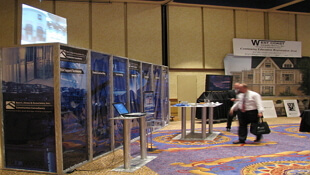
2009-With the success of the rear screen projection, BHA adds additional monitors to provide attendees with more information about BHA.
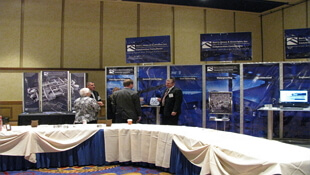
2010-BHA adds an interpretive professional development exhibit targeted to Building Envelope issues allowing adjusters and other non-construction professionals hands on access to the systems and components at the heart of many related such claims.


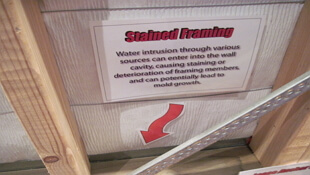
2011-BHA's Swing for Charity challenge is born.

2012-Always innovating, BHA expands its rear projection and professional development offerings to West Coast attendees.

2013-BHA showcases additional capabilities with a twenty-four foot, custom, convex, immersive video experience.

2014-BHA adds an iPhone display to give a hands-on demonstration of their data collection methods.
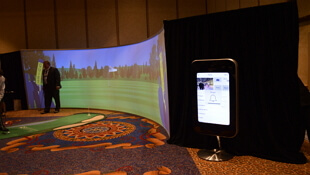
2015-BHA's twenty-four foot , custom, convex, immersive video experience was elevated with two additional rear projection screens, reflecting BHA's newest capabilities and services.

2016-BHA dazzles attendees with their new exhibit comprised of more than 15 integrated, high definition, LCD displays. iPads are stationed on tables to conveniently demonstrate BHA's data collection processes.
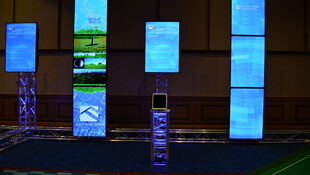
2017-BHA's Swing for Charity Golf Challenge raised $2,225.00 for the National Coalition for Homeless Veterans and $1,900 for Final Salute.
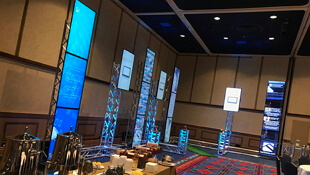
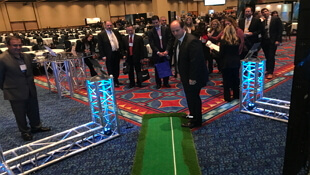
Read the court decisionRead the full story...Reprinted courtesy of
Five Types of Structural Systems in High Rise Buildings
November 02, 2020 —
Chris Jackson - Construction ExecutiveToday, many cities in different countries have high-rise buildings or more popularly known as skyscrapers. The concept of skyscraper was first used to define the more than 137-foot-high buildings constructed in Chicago in 1885. It is generally defined as one that is taller than the maximum height that requires mechanical vertical transportation for people. Usually, these buildings only have limited uses and are primarily focused on functioning as residential apartments, hotels and office buildings, though they occasionally include retail and educational facilities. Because high-rise buildings are among the largest buildings built, it is necessary that their commercial and office functions require a high degree of flexibility.
That’s why it is important for high-rise buildings to have structural systems or structural frames—the assembly of interrelated or interdependent elements that forms a complex structure. These structural systems are built and designed for resisting different loads. To further understand how structural systems work, take the human body as a comparison. If human bones are weak and not properly aligned, the human body as a whole will not be able to perform or work well. Structural systems, in the same way, would not be able to take loads if not built properly. After all, no one wants a toppling skyscraper. To give the readers more information about structural systems in high-rise buildings, this article will discuss some of them.
Reprinted courtesy of
Chris Jackson, Construction Executive, a publication of Associated Builders and Contractors. All rights reserved.
Read the court decisionRead the full story...Reprinted courtesy of
Dangerous Condition, Dangerous Precedent: California Supreme Court Expands Scope of Dangerous Condition Liability Involving Third Party Negligent/Criminal Conduct
August 19, 2015 —
R. Bryan Martin, Laura C. Williams, & Lawrence S. Zucker II – Haight Brown & Bonesteel LLPIn Cordova v. City of Los Angeles (filed 8/13/15, Case No. S208130), the California Supreme Court held a government entity is not categorically immune from liability where the plaintiff alleges a dangerous condition of public property caused the plaintiff’s injury, but did not cause the third party conduct which precipitated the accident.
The case arises out of a traffic collision by which the negligent driving of a third party motorist caused another car to careen into a tree planted in the center median owned and maintained by the City of Los Angeles (“City”). Of the four occupants in the car that collided with the tree, three died and the fourth was badly injured. The parents of two of the occupants sued the City for a dangerous condition of public property under Government Code Section 835. The plaintiffs alleged the roadway was in a dangerous condition because the trees in the median were too close to the traveling portion of the road, posing an unreasonable risk of harm to motorists who might lose control of their vehicles.
The City successfully moved for summary judgment, which plaintiffs appealed. On review, the Court of Appeal affirmed holding the tree was not a dangerous condition as a matter of law because there was no evidence that the tree had contributed to the criminally negligent driving of the third party motorist.
Reprinted courtesy of Haight Brown & Bonesteel LLP attorneys
R. Bryan Martin,
Laura C. Williams and
Lawrence S. Zucker II
Mr. Martin may be contacted at bmartin@hbblaw.com
Ms. Williams may be contacted at lwilliams@hbblaw.com
And Mr. Zucker may be contacted at lzucker@hbblaw.com
Read the court decisionRead the full story...Reprinted courtesy of
Homeowner may pursue negligence claim for construction defect, Oregon Supreme Court holds
March 01, 2011 —
Lori Bauman, Ater Wynne LLPIn Abraham v. T. Henry, Oregon’s court of appeals held that a Oregon’s court of appeals holds that a homeowner may sue builder for common law negligence absent a contractual provision that forecloses such a claim. Plaintiff homeowners hired defendant contractors to build a house. When plaintiffs discovered defects in the construction years later, they sued for negligence.
�The Court of Appeals held that the parties’ contractual relationship did not prevent a negligence claim, and that plaintiffs were entitled to pursue a negligence per se claim based on a violation of the Oregon Building Code.
�The Supreme Court affirmed, but on a somewhat different basis. First, according to the Court, a construction defect claim concerns damage to property — and not mere economic losses — and thus is not barred by the economic loss doctrine. Second, the existence
�Read Full Story...
Read the court decisionRead the full story...Reprinted courtesy of
Smart Home Products go Mainstream as Consumer Demand Increases
November 05, 2014 —
Beverley BevenFlorez-CDJ STAFFGigaom reported that Wal-Mart announced yesterday that they will begin selling Insteon gear, one of the Smart Home products, in 1,500 of its stores across the country. "The products in store will include a starter kit, motion sensors, dimmers, IP cameras, LED bulbs, leak sensors and door/window sensors among others. Wal-Mart also sells Chamberlain gear and a few other connected devices on its web site." According to Builder, a Savant survey demonstrated that "Americans are eager for home automation, proving that technology is a great way for builders to distinguish their new homes from the rest of the market."
In another article, Gigaom announced that Netgear will be introducing a line of Smart Home products under the name Arlo.
Read the full story, Gigaom, Wal-Mart now sells Insteon gear...
Read the full story, Gigaom, Netgear launches its Arlo smart home brand with a camera...
Read the full story, Builder... Read the court decisionRead the full story...Reprinted courtesy of




































































